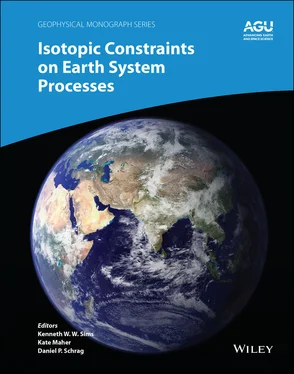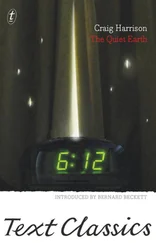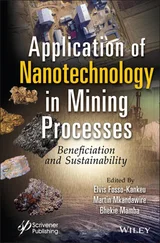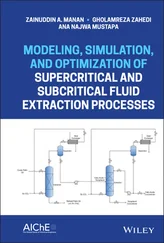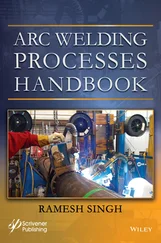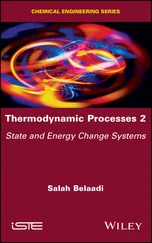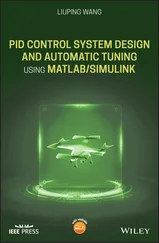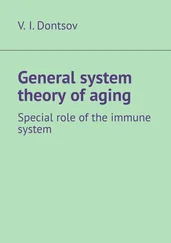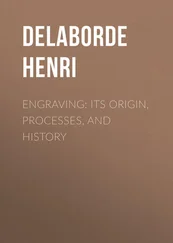Isotopic Constraints on Earth System Processes
Здесь есть возможность читать онлайн «Isotopic Constraints on Earth System Processes» — ознакомительный отрывок электронной книги совершенно бесплатно, а после прочтения отрывка купить полную версию. В некоторых случаях можно слушать аудио, скачать через торрент в формате fb2 и присутствует краткое содержание. Жанр: unrecognised, на английском языке. Описание произведения, (предисловие) а так же отзывы посетителей доступны на портале библиотеки ЛибКат.
- Название:Isotopic Constraints on Earth System Processes
- Автор:
- Жанр:
- Год:неизвестен
- ISBN:нет данных
- Рейтинг книги:4 / 5. Голосов: 1
-
Избранное:Добавить в избранное
- Отзывы:
-
Ваша оценка:
- 80
- 1
- 2
- 3
- 4
- 5
Isotopic Constraints on Earth System Processes: краткое содержание, описание и аннотация
Предлагаем к чтению аннотацию, описание, краткое содержание или предисловие (зависит от того, что написал сам автор книги «Isotopic Constraints on Earth System Processes»). Если вы не нашли необходимую информацию о книге — напишите в комментариях, мы постараемся отыскать её.
Volume highlights include: Isotopic Constraints on Earth System Processes
The American Geophysical Union promotes discovery in Earth and space science for the benefit of humanity. Its publications disseminate scientific knowledge and provide resources for researchers, students, and professionals.
Isotopic Constraints on Earth System Processes — читать онлайн ознакомительный отрывок
Ниже представлен текст книги, разбитый по страницам. Система сохранения места последней прочитанной страницы, позволяет с удобством читать онлайн бесплатно книгу «Isotopic Constraints on Earth System Processes», без необходимости каждый раз заново искать на чём Вы остановились. Поставьте закладку, и сможете в любой момент перейти на страницу, на которой закончили чтение.
Интервал:
Закладка:
Some recent diffusion experiments showed results that still are quite surprising and raise issues that could eventually be understood by further laboratory experiment and theoretical methods including molecular dynamics calculations. For example, recent experiments raise the question of why diffusion in igneous minerals such as clinopyroxene and olivine is more effective at fractionating isotopes of a major element (e.g., Mg) and of a trace element (e.g., Li) than diffusion in a silicate melt? Another question whose answer might illuminate fundamental thermodynamic properties of silicate melts is why Soret diffusion in a basalt liquid is so effective at fractionating isotopes, or put another way, why is the isotopic fractionation associated with the mass flux driven by a thermal gradient so much larger than that of the flux driven differences in concentration?
The situation with regard to experiments that determine high‐temperature kinetic isotope fractionation of silicate liquids by evaporation is similar to that of diffusion in that only a limited parameter range has so far been thoroughly explored. For the most part these experiments involve evaporation into vacuum whereas evaporation in the early solar system involved evaporation of molten precursors to the CAIs now found in chondritic meteorites in a finite gas pressure of hydrogen and more oxidizing conditions later on when chondrules were melted. Richter et al. (2002) did report the results of the chemical and isotopic fractionation of a set of experiments in which a CAI‐like liquid was evaporated at 1500°C and P H2 = 2×10 ‐4bars. They found that despite the evaporation rates in these low‐P H2 experiments being about two orders of magnitude faster than in vacuum, the magnesium isotopic fractionation of the evaporation residues as a function of the amount of magnesium lost was not measurably different than in vacuum. The isotopic composition of the evaporation residues from these experiments were measured with much less precision compared to what can be done with a modern ion probe, so there now could well be a resolvable difference between evaporation in vacuum and in low pressure hydrogen. The reason why one should consider repeating these earlier evaporation experiments in hydrogen is that the more precisely one can determine the amount of Mg and Si volatilized based on the isotopic fractionation of individual CAIs, the more precisely one can determine the composition of their precursor. More accurate estimates of the composition of CAI precursors will allow for more compelling validation or refutation of a fundamental proposition in cosmochemistry: that the precursors of the CAIs were condensates from a common well‐mixed solar compositions gas.
Expanding the laboratory evaporation experiments to higher pressures and more oxidizing gas mixtures will be challenging. The design of the furnaces that are now used to determine the isotopic fractionation of evaporation residues are limited to low gas pressures of less than about 10 –3bars and limited in the range of gas compositions in order that the furnace parts not also evaporate under oxidizing conditions. One will need to develop new experimental approaches in order to carry out evaporation experiments under a range of conditions that may have prevailed in the early solar nebula. A promising new approach for this involves the evaporation of molten beads in a laser heated aerodynamic levitation furnace. In such an apparatus a molten sample is floated on top of a stream of a prescribed gas composition and heated to high temperature by a laser. Winpenny et al. (2019) have shown that materials evaporated in such a furnace do become isotopically fractionated. The levitation experiments have their own limitation in that the gas flow cannot be varied at will because of the flow needed to levitate a sample of a given size. However they do provide quantitative information on evaporation into a flowing gas, which is the sort of evaporation that could take place in impact plumes. Fedkin et al. (2015) have argued that the chemical compositions of at least some types of chondrule are best explained as having once been molten droplets in impact plumes
The present report limited itself to kinetic isotope effects in high‐temperature silicate systems. The interested reader will find a discussion of a large number of works reporting kinetic isotope fractionations in aqueous solutions in Watkins et al. (2017).
REFERENCES
1 Beck P., Chaussidon, M., Barrat, J. A., Gillet, Ph., & Bohn, M. (2006). Diffusion induced Li isotopic fractionation during the cooling of magmatic rocks: The case of pyroxene phenocrysts from nakhlite meteorites. Geochimica et Cosmochimica Acta, 70, 4813–4825. doi: 10.1016/j.gca.2006.07.025
2 Bourg, I. C., Richter, F. M., Christensen, J. N., & Sposito, G. (2010). Isotopic mass‐dependence of metal cation diffusion coefficients in liquid water. Geochimica et Cosmochimica Acta, 74, 2249–2256. https://doi.org/10.1016/j.gca.2010.01.024
3 Bowen, N. L. (1921). Diffusion in silicate melts. Journal of Geology, 29, 295–317. https://doi.org/10.1086/622784
4 Chapman, S., & Dootson, M. A. (1917). A note on thermal diffusion. The London, Edinburgh, and Dublin Philosophical Magazine and Journal of Science, 33, 248–253. https://doi.org/10.1080/14786440308635635
5 Chopra, R., Richter, F. M., & Watson, E. B. (2012). Isotope fractionation by chemical diffusion in natural settings and in their laboratory analogues. Geochimica et Cosmochimica Acta, 88, 1–18. https://doi.org/10.1016/j.gca.2012.03.039
6 Clayton, R. N., Hinton, R. W., & Davis A. M. (1988). Isotopic variations in the rock‐forming elements in meteorites. Philosophical Transactions of the Royal Society of London A, 325, 483–501. https://doi.org/10.1098/rsta.1988.0062
7 Cooper, A. R. (1968). The use and limitations of the concept of an effective binary diffusion coefficient for multicomponent diffusion. In: J. B. Wachtman and A. D. Franklin (eds.), Mass Transport in Oxides, NBS Special Publication 296, 79–84.
8 Davis, A. M., Hashimoto, A., Clayton, R. N., & Mayeda, T. K. (1990). Isotope mass fractionation during evaporation of Mg2SiO4. Nature, 347, 655–658. https://doi.org/10.1038/347655a0
9 de Groot, S. R., & Mazur, P. (1962). Non‐Equilibrium Thermodynamics. Dover.
10 Dohmen, R., Kasemann, S. A., Coogan, L. A., & Chakraborty, S. (2010). Diffusion of Li in olivine. Part 1: Experimental observations and a multiple species diffusion model. Geochimica et Cosmochimica Acta, 74, 274–292. https://doi.org/10.1016/j.gca.2009.10.016
11 Enskog, D. (1917). Kinetische Theorie der Vorgaenge in maessig verduennten Gasen. I. Allgemeiner Teil, Uppsala.
12 Fedkin, A. V., Grossman, L., Humayun, M., Simon, S. B., & Campbell, A. J. (2015). Condensates from vapor made by impacts between metal‐, silicate‐rich bodies: Comparison with metal and chondrules in CB chondrites. Geochimica et Cosmochimica Acta, 164, 236–261. https://doi.org/10.1016/j.gca.2015.05.022
13 Galy, A., Yoffe, O., Janney, P. E., Williams, R. W., Cloquet, C., Alard, O., et al. (2003). Magnesium isotope heterogeneity of the isotopic standard SRM980 and new reference materials for magnesium‐isotope ratio measurements. Journal of Analytical Atomic Spectrometry, 18, 1352–1356. https://doi.org/10.1039/B309273A
14 Goel, G., Zhang, L., Lacks, D. J., & Van Orman, J. A. (2012). Isotope fractionation by diffusion in silicate melts: Insights from molecular dynamics simulations. Geochimica et Cosmochimica Acta, 93, 205–213. https://doi.org/10.1016/j.gca.2012.07.008
15 Grossman, L., Ebel, D. S., Simon, S. B., Davis, A. M., Richter, F. M., & Parsad, N. M. (2000). Major element chemical and isotopic composition of refractory inclusions in C3 chondrites: The separate roles of condensation and evaporation. Geochimica et Cosmochimica Acta, 64, 2879–2894. https://doi.org/10.1016/S0016‐7037(00)00396‐3
Читать дальшеИнтервал:
Закладка:
Похожие книги на «Isotopic Constraints on Earth System Processes»
Представляем Вашему вниманию похожие книги на «Isotopic Constraints on Earth System Processes» списком для выбора. Мы отобрали схожую по названию и смыслу литературу в надежде предоставить читателям больше вариантов отыскать новые, интересные, ещё непрочитанные произведения.
Обсуждение, отзывы о книге «Isotopic Constraints on Earth System Processes» и просто собственные мнения читателей. Оставьте ваши комментарии, напишите, что Вы думаете о произведении, его смысле или главных героях. Укажите что конкретно понравилось, а что нет, и почему Вы так считаете.
